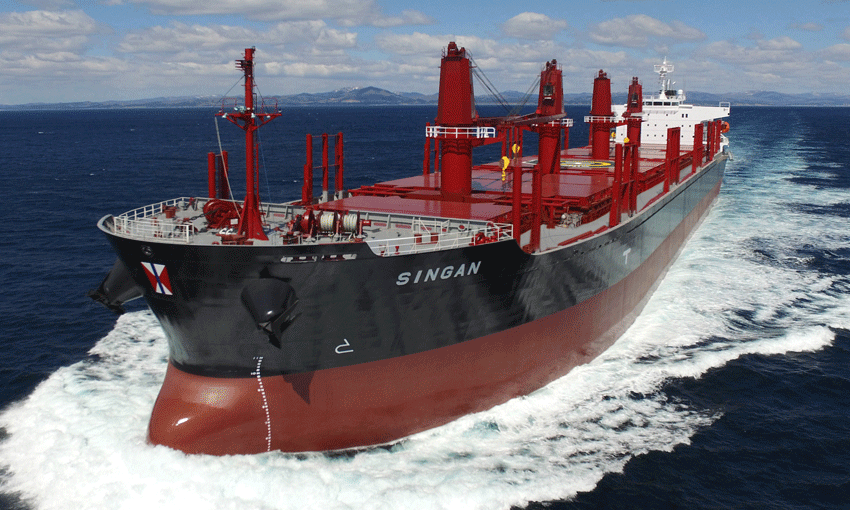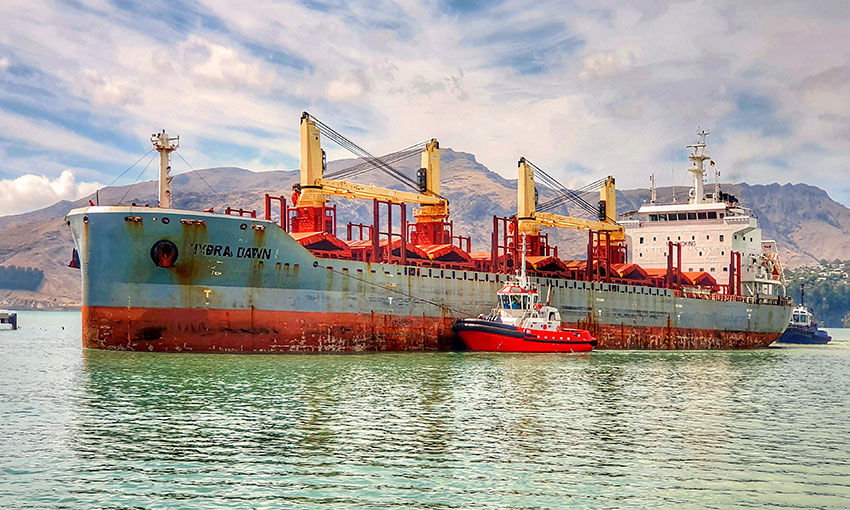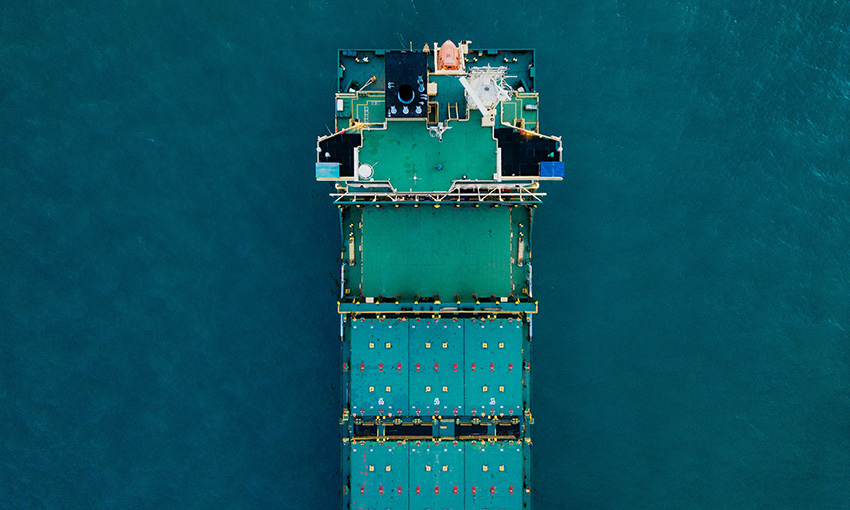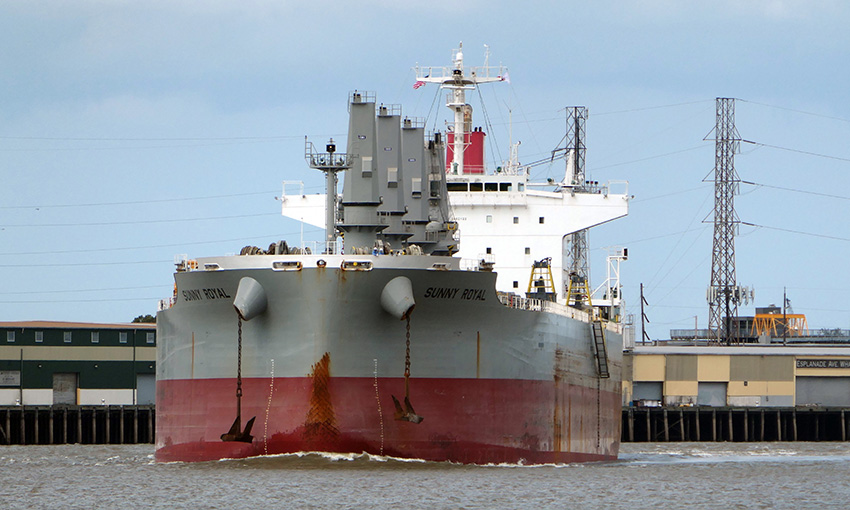Capesize
The Capesize market was in dire straits this week as tonnage levels were heard to be building while many areas had minimal activity as the 5TC dropped -15,398 to US$36,065 week on week.
The Pacific Basin was under pressure earlier on in the week but did find a floor mid-week, albeit at a significant discount to the Atlantic Basin. The Transpacific C10 ended the week on an upbeat at US$32,979, while the Transatlantic C8 struggled the whole week to find a footing coming off -4300 on Friday alone to settle at US$41,600.
The large disparity between the Pacific and Atlantic oceans made for difficulties throughout the week in pricing the minimal Atlantic business available, which was compounded when combined with the strong backwardation in the paper markets for the remainder of Q4.
Trade from Brazil to China lowered severely throughout the week with the ballaster timecharter route C14 dropping to US$28,195. While rates have now halved from their highs in early October, levels are still thought to be robust and we are only part way through the Q4 high season.
Panamax
The week has seen a large drop in rates across all of the routes, which was not helped by a lack of activity in the first half.
With new lows, however, there has been an increase in cargo quoted – enough to sustain the present levels at least for now. There has been some resistance shown in the Atlantic and perhaps a floor is being reached with grains in particular fixing at close to last done.
However, the short-term outlook remains soft in the Pacific with little cargo from both NoPac grains and Australian coal, combined with a growing tonnage list there could be further drops next week.
The BPI opened on Monday at 4328 and closed the week down by 432 at 3896, and the Panamax 5TC fell by US$3891 to US$35061. There has been some period activity with the Star Helena (82,150-dwt built 2006) fixed for about nine months at US$32,000, the Medi Chiba (81,400-dwt built 2016) fixed for 30 to 34 months at US$22,750, and the Panamax, Magic Phoenix (76,638-dwt built 2008), fixed for nine to 12 months at 102% of the BPI74.
Ultramax/Supramax
A change of direction for the sector as limited fresh enquiry appeared in the market across many areas leading to increased tonnage availability. Period activity was limited but a 63,000-dwt open China was linked to eight to 10 months trading on an index linked rate basis 114% of BSI 10TC.
In the Atlantic, the positive gains from the last few weeks collapsed. A 56,000-dwt fixing delivery SW Pass trip to South East Asia in the low US$50,000s was seen, whilst for Transatlantic runs Ultramax size was seeing in the mid to upper US$40,000s. Elsewhere from the Continent a little more resistance was seen, with a 56,000-dwt fixing a scrap run to the East Mediterranean at US$41,000. Similarly, from Asia demand waned. A Supramax open CJK was fixed for an Indonesian round at US$21,000 whilst for NoPac rounds a 56,000-dwt open Japan fixed for a trip via US West Coast with redelivery Southeast Asia at US$31,000. All eyes on next week to see if this trend will continue.
Handysize
This week the BHSI made some negative moves with both Atlantic and Pacific basins softening. The softening in Asia was suggested to be due to a lack of fresh enquiry. Congestion in Chinese ports has eased, possibly due to industry scaling back due to the upcoming Winter Olympics. A 39,000-dwt open in North China fixed a trip via CIS to China at US$26,000. A 33,000-dwt in CJK fixing a round trip via Australia to China at US$28,000.
The positivity in the US Gulf region changed, seeing the first negative moves on the HS4 route in some time. A 38,000-dwt open in East Coast Mexico via US Gulf and West Coast Central America with redelivery Cristobal at US$40,000.
The period has been active with a 33,000-dwt opening Rotterdam fixing minimum four to six months with Atlantic redelivery at US$35,000. A 33,000-dwt open in Puerto Plata fixed six to eight months with Atlantic redelivery at US$35,000.

VLCC
Further rate gains have been seen as Chinese charterers amongst others were a little more active in the Middle East and Atlantic regions.
For the 280,000-mt Middle East Gulf to US Gulf (Cape/Cape routing) market rates are assessed a point firmer at WS22.5 level, while the rate for 270,000-mt Middle East Gulf to China rose 2.5 points to WS46 (a roundtrip TCE of US$5,200/day). In the Atlantic, rates for 260,000-mt West Africa to China rose two points again this week to just over WS48 (a TCE of US$8800/day roundtrip) and 270,000-mt US Gulf to China is up US$75,000 from a week ago at US$5.5625m (a TCE of US$9600/day roundtrip).
Suezmax
In West Africa the market eased slightly with rates for 130,000-mt Nigeria/UK Continent losing about 3.5 points to WS75 (showing a roundtrip TCE of about US$7400/day) while the rate for 135,000-mt Black Sea/Med remained relatively flat at the WS85 mark (a TCE roundtrip of about US$6300 per day).
The Middle East/Mediterranean market quietened down this week with only one fixture of a Greek owner fixing a Greek charterer for a Basra/Greece trip reported at WS50. The rate for 140,000-mt Basra/Lavera is now assessed at WS48, slipping a point from a week ago.
Aframax
In the Mediterranean, the market has firmed considerably and the rate for 80,000-mt Ceyhan/Lavera has pushed up 22.5 points to almost WS135 (US$18,600/day TCE roundtrip), while in Northern Europe the market for 80,000-mt Cross-North Sea has improved by 8 points to about WS117 (a TCE of about US$5900/day) and 100,000-mt Baltic/UK Continent gained 6.5 points to WS88.5/89 level (a TCE of about US$8600/day roundtrip).
Across the Atlantic, the market is still gradually easing with the rate for 70,000-mt US Gulf/UK Continent slipping another 3.5 points to WS124 (a TCE of US$10,300/day roundtrip), while the 70,000-mt Caribbean/US Gulf rate is down four points to WS145 (a TCE of US$15,200/day roundtrip) and 70,000-mt East Coast Mexico/US Gulf is 3.5 points lower than a week ago at WS149 (US$18,400/day TCE roundtrip).
Clean
The Middle East Gulf has seen upturn all around this week, with activity and rates gradually climbing as the week has progressed.
On the LR2s the TC1 rose 2.86 points to WS 95.36, a round-trip TCE of US$3616/day. The LR1s have followed a similar pattern and TC5 55k Middle East Gulf/Japan is up 3.71 points to WS128 a round-trip TCE of US$8602/day. The MRs have seen the biggest jump. The 35k Middle East Gulf/East Africa (TC17) is now WS195.42 (+WS 8.34).
The Mediterranean Handy market saw activity continue to put ships on subs, but rates are still under pressure.TC6 30kt Skikda/Lavera is now at WS 146.13 (- WS 13.87). The LR2s, TC15 80k Mediterranean/Japan were tested upward and are now marked at around US$1.85 million.
The Baltic Handy market saw a bit of momentum early in the week and the increased enquiry drove freight upwards into the WS160s, which then resettled. The TC9 30k Baltic/UK-Continent is now WS 152.86 (+ WS 26.07)
On the UK-Continent MRs, solid inquiries were introduced from the beginning of the week pushing Transatlantic levels up. The TC2 37k UK-Continent/US Atlantic Coast climbed WS5.56 to WS125 with sentiment for higher freight to come at time of writing. The TC19 37k Amsterdam to Lagos has also shown a consistently firming trend and is currently pegged at WS125.
On the LR1s, TC16 60k Amsterdam/Offshore Lomé have held steady and continue along at the WS100 mark for the moment.
In the Americas, renewed volume of fixing has yielded momentum in freight levels. TC14 38k US Gulf/UK-Continent jumped to WS 100.71 (+WS 22.85) and TC18 38k from US Gulf/Brazil rose WS 23.21 to WS 143.21
The MR Atlantic basket TCE rose from US$2892/day to US$6865/day.





